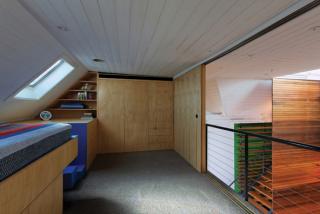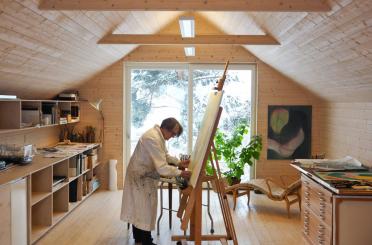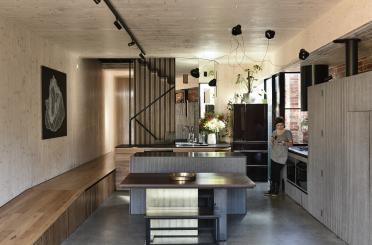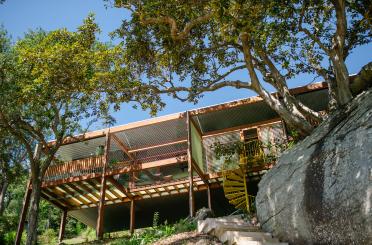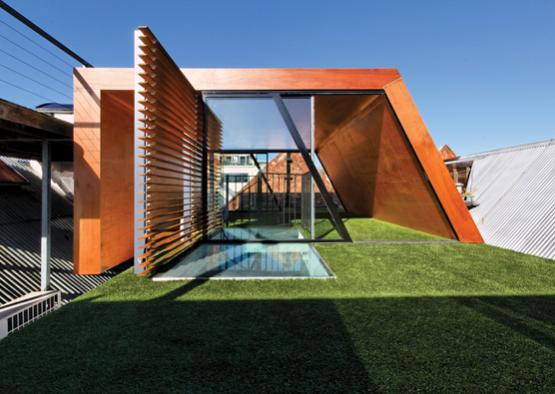
Overview
Redesigning this inner-city apartment in the historically significant MacRobertson warehouse area of Melbourne's Fitzroy presented project architect Andrew Maynard with more than the usual share of challenges.
The defined nature of the boundaries meant an innovative approach had to be adopted to make the most of the available resources. The result is an adaptable dwelling that - with its occupants - will grow and alter over time.
Nestled within the undulating roofline is a roof terrace with a difference - complete with canopy and artificial lawn. The vertical and architectural pinnacle of this warehouse residence fills the void that affects so many inner-city dwellings - lack of outdoor space.
Story and pictures by special arrangement with timber+DESIGN International magazine.
Structure
The original apartment had innate thermal and acoustic shortcomings, that made it less-than-ideal for occupancy by a family with young boys. "Balancing intimacy with privacy was a significant consideration," says Maynard, "and has been achieved by focusing on adapting spaces."
Previously, an open, vertical path of stairs allowed sounds to travel to all corners of the dwelling - helped by ubiquitous reflective surfaces of steel and concrete. The challenge was to reduce sound transmission, but not to a point of isolation. The family enjoyed the connection allowed by cross-level communication, the solution was found in celebrating the very thing that made the house different - its vertical nature.
An adjustable vertical spine was fashioned from floor-to-roof, creating a flexible isolation between levels. Operable louvres allow controllable degrees of isolation; timber shelves offer further resistance and a strip of green carpet flanking the spine introduces a much-needed soft surface. A stack effect was also fostered, where strategic ventilation allowed purging of hot air to the terrace during summer.
The roof pod atop the vertical spine sits within the existing structure - which was simply cut at the collar-tie and refashioned to minimise the use of steel and allow a bed for the roof pod.
Exterior
It became clear during site analysis that neighboring roof terraces were being under utilised - not only because of high sun and wind exposure but also because of their spatial disconnection from the dwellings below.
Lifting the roof allowed the 'flesh' of the dwelling within to be revealed. Maynard says sitting the pod within the roofline, as opposed to above, was imperative in maintaining engagement with the house below. The 'turf' covering is both practical and playful, bolstering tension against the adjacent corrugated tin. With doors wide open, the continuity of turf blurs and line between inside and out.
Next to the spiral staircase a trafficable glass floor on the roof allows a visual connection and natural light to flow to the living areas below. Adjustable louvres and blind help control light penetration.
Interior
Maynard says the existing mezzanine floor was "somewhat of an acoustic pitfall". The challenge was to cordon off the space to use as a bedroom, without obstructing the all-important windows.
The solution came in covering the gap between wall and floor in playful joinery, with a cavity to allow light and ventilation to the living room below. The joinery not only successfully dislocates the spaces but also becomes a bed, storage, robe and table. To the other side of the room, in-lieu of a dumb wall, oversized sliding doors offer acoustic and thermal isolation when needed.
New overhead joinery was added in the kitchen for storage and as a point of connection to the living space beyond. The new spiral staircase also ties it into the architecture of the space.
